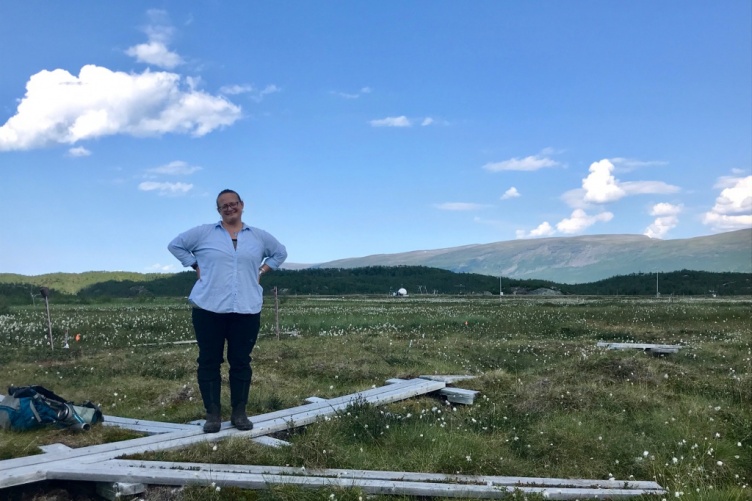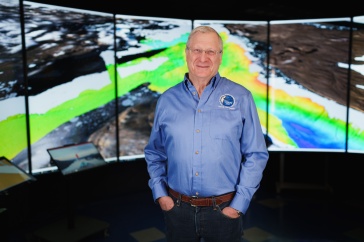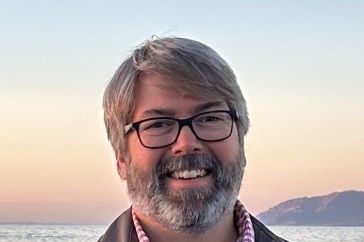
Ruth Varner, UNH professor of biogeochemistry, is strengthening her ties to the Arctic; she has been appointed to a yearlong position as a visiting researcher at Stockholm University (SU) in Sweden. This appointment recognizes Varner’s long-term commitment to Arctic research and education, and will provide broader opportunities for her, as well as UNH students and faculty, to connect with scientists, students and Indigenous peoples who are on the front lines of climate change in northern regions.
In partnership with the Bolin Center for Climate Research and the Department of Physical Geography at SU, Varner submitted a proposal to the Visiting Researcher in Climate and Environment program through Vetenskapsrådet, the Swedish Research Council. Varner will split her time between Sweden and UNH during the year, thereby providing a more robust conduit for knowledge.
“I view this experience as an opportunity to continue building UNH’s capacity for Arctic research and education,” Varner says. “This is a direct outcome of UNH’s investment in the Arctic over the years.”
“I view this experience as an opportunity to continue building UNH’s capacity for Arctic research and education.”
“We are excited to have Ruth working with us during an extended period,” says Nina Kirchner, director of the Bolin Centre for Climate Research. “Only four awards were appointed last year to bring US scientists working in the field of climate and environment to Sweden, and Ruth got one of them”.
As part of her appointment as a visiting researcher, Varner will collaborate with students and researchers from UNH, SU and Umeå University to collect methane emission data from the thawing permafrost region of Abisko, Sweden. No stranger to this type of field work, Varner will focus on how Arctic lakes and streams are responding to climate change and how that’s impacting emissions of methane, a greenhouse gas. Varner and her Swedish colleagues will then use those data to improve computer models that estimate future methane emissions, which will help scientists to learn more about how Arctic ecosystems could be impacted by climate change.
“We see Ruth’s stay and work with us at Stockholm University as highly valuable and an important pathway to new opportunities for further fruitful collaborations,” says Gia Destouni, head of the department of physical geography. “We warmly welcome Ruth and look forward to our interactions during her extended visit.”
Varner says she first began working in Sweden more than a decade ago thanks to a connection from her Ph.D. advisor. She returns to the Arctic each summer — specifically, to the Stordalen Mire Complex in Abisko — to conduct climate change research along with UNH undergrads and graduate students. By becoming a visiting researcher and working in Sweden for longer periods of time, she hopes to deepen those connections with colleagues she has met over the years.
“You can easily get funding to go to a research site, conduct your research, and then leave, but when you have more time to spend working and living with people, you can actually build relationships and develop more collaborative research that way,” she says. “So I’m excited to build an international collaborative research group.”
During the times when Varner is back stateside this year, she will be working with UNH colleagues to continue formalizing the UNH Arctic Research and Scholarship Initiative, an effort to build a more vibrant and interdisciplinary network of Arctic researchers at UNH and increase the university’s visibility within the national and international Arctic dialogue, with a focus on the Atlantic sector of the Arctic.
Varner also has plans to help establish an exchange program so UNH students will have similar opportunities to immerse themselves in Arctic research and education. With Julie Bryce, UNH professor of Earth sciences, Varner received support from UNH’s Global Education Center (GEC) toward these efforts. Together they are working with SU colleagues and the GEC to develop models for student exchange.
“I enjoy providing opportunities for students to get outside their comfort zone,” she says. “An Arctic exchange program would allow them to develop their international research skills, help them to grow and could really change their lives.”
The Institute for the Study of Earth, Oceans, and Space (EOS) is UNH’s largest research enterprise, comprising six centers with a focus on interdisciplinary, high-impact research on Earth and climate systems, space science, the marine environment, seafloor mapping, and environmental acoustics. With more than $43 million in external funding secured annually, EOS fosters an intellectual and scientific environment that advances visionary scholarship and leadership in world-class research and graduate education.
-
Written By:
Rebecca Irelan | Institute for the Study of Earth, Oceans, and Space | rebecca.irelan@unh.edu | 603-862-0990

















































